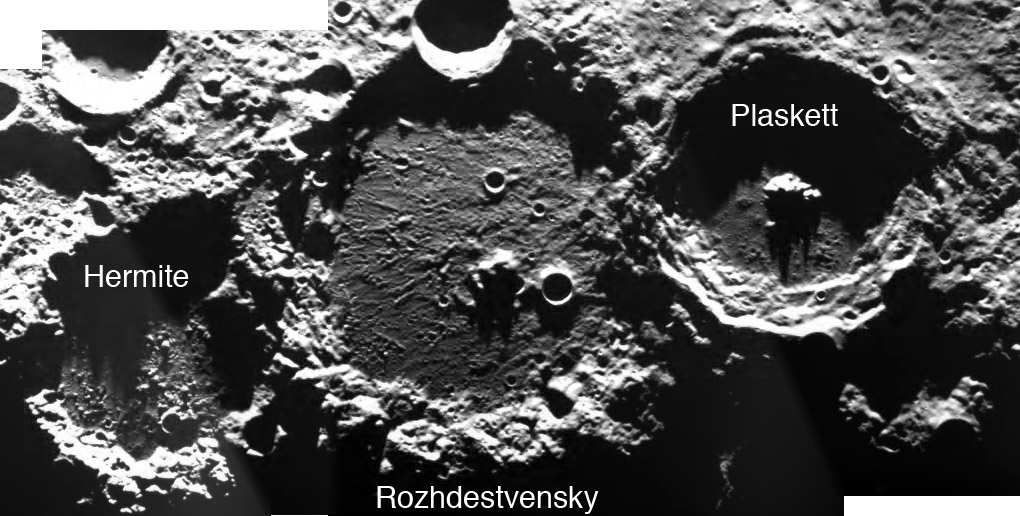
image by ESA/SMART-1 AIME camera. The left edge of the mosaic is generally pointing towards the Earth-facing lunar hemisphere and the right edge points toward the farside.
Beyond the north pole, on the far side of the Moon, are Plaskett and Rozhdestvensky (Roz), while Hermite lies right of the limb. Hermite is rarely seen from Earth, and the others were essentially unknown until Lunar Orbiter IV imaged them. In 2005 the SMART-1 cameras captured the images of this mosaic. Based upon superposition, Plaskett is the youngest of the three, and Hermite is the oldest. This sequence is reflected in the sharpness and continuity of their rims. Ejecta from Plaskett is also splayed across the floor of Rozhdestvensky, and the latter’s rim impinges on Hermite. Plaskett is a fairly young crater and it might even have rays, but they would be difficult to detect since the illumination is always low there. A very strange line of 10 bumps is clearly shown on the Clementine image of Plaskett, but on the SMART-1 image the feature just appears as a bright ridge along the bottom edge of the crater floor. The bright peak on the floor of Roz is so far off center that I wonder if Roz is actually two large overlapping craters with a missing wall? Notice how the upper rim seems to have a smaller radius of curvature than the bottom half.
Note: My laptop computer’s hard drive is dead and all the submitted images for LPOD are gone, please re-submit any recent images - and more new ones! Thanks!
Related Links:
Clementine Atlas plate 1
Yesterday's LPOD: Tycho's Projectile
Tomorrow's LPOD: Troughful Magnificence
COMMENTS?
Register, Log in, and join in the comments.



